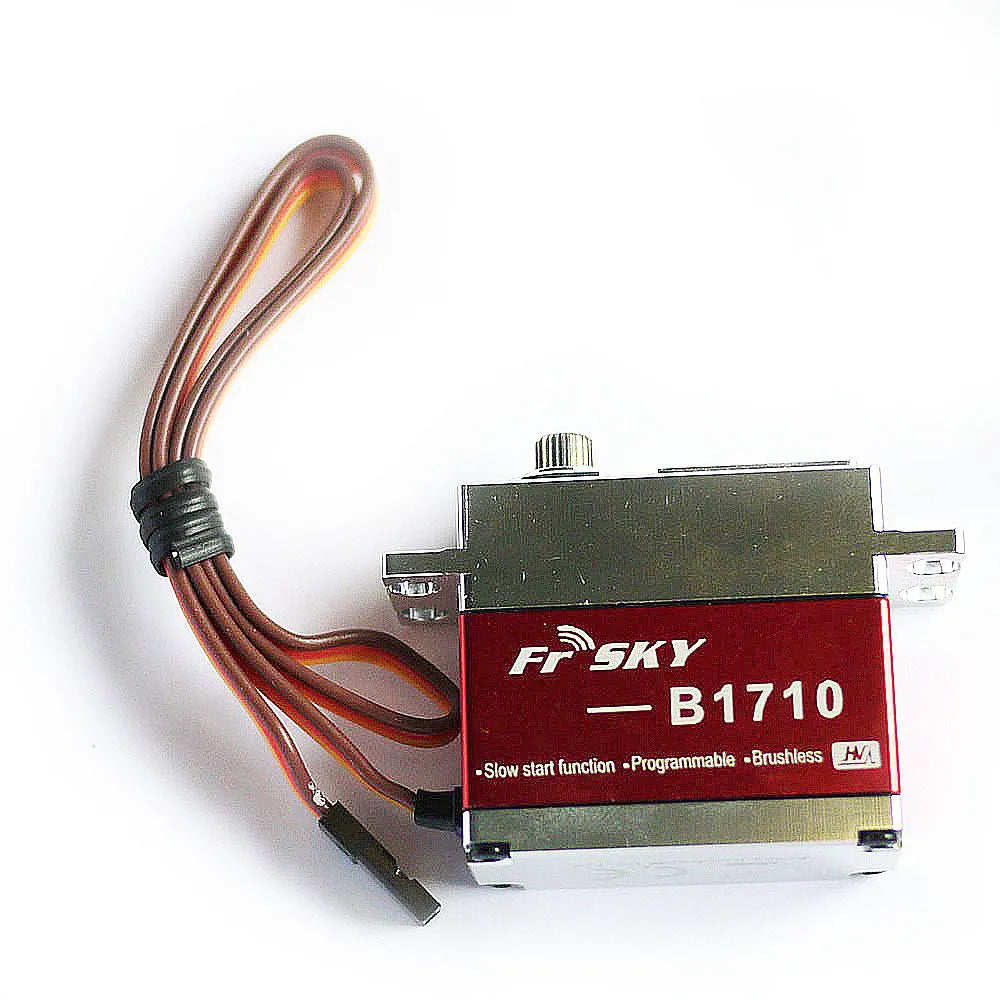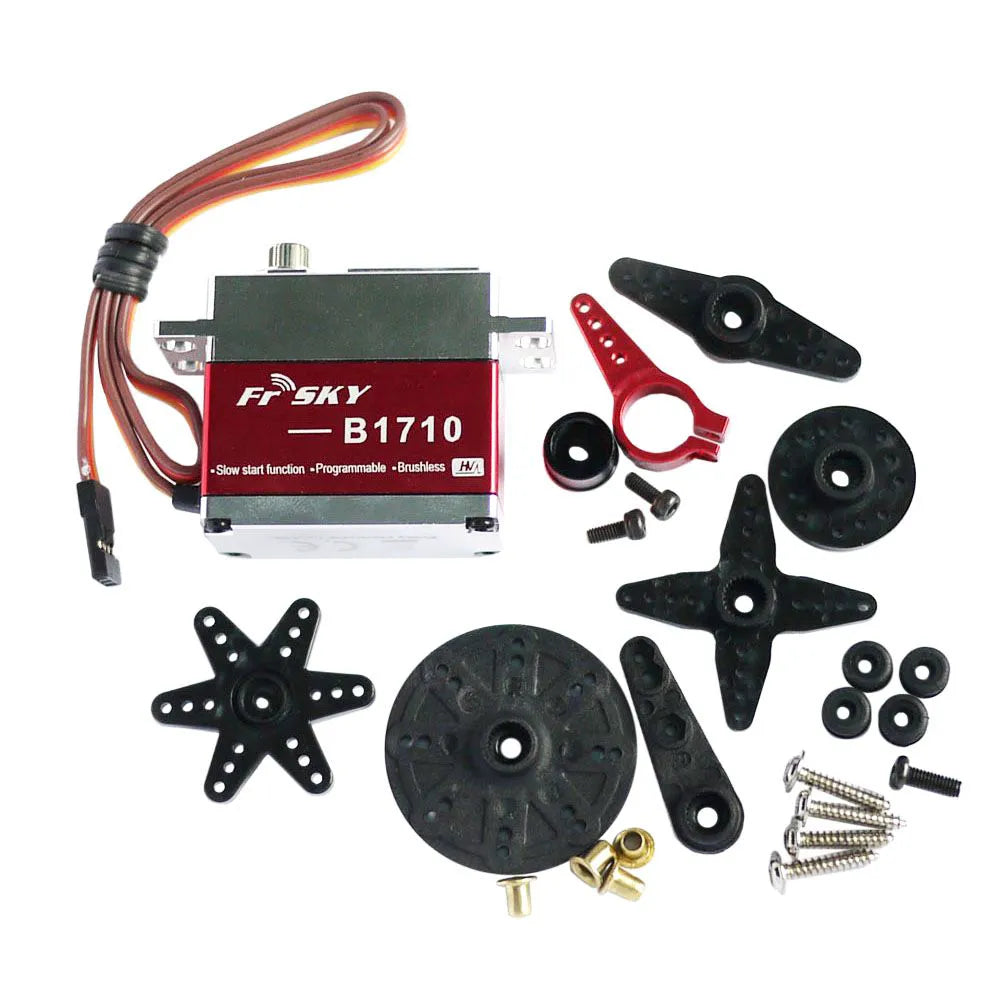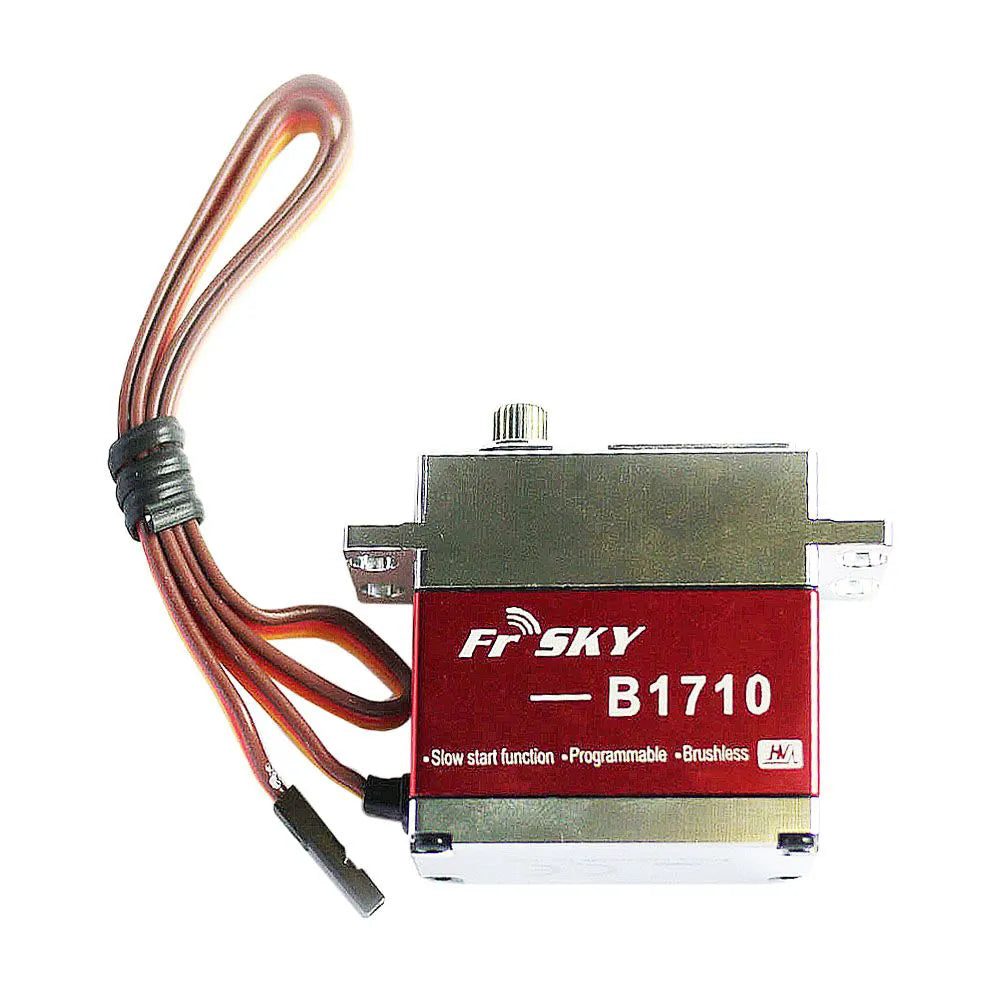Utilizing the SBUS system in your aircraft can help you reduce the amount of wiring in your model and even save you a little bit of weight to boot. Imagine a full house glider wing with six servos that only needs a 3 pin(+ - /signal) electrical connection per wing. Pretty neat right. That is the advantage of SBUS servos. It works like this. Each of the servos are connected to same signal wire which is in turn connected to the SBUS output on the receiver. That signal wire contains all the information needed to control every servo in the plane. The servos then read the SBUS line and respond only to the signals that have been addressed specifically to them.
The servo construction is very good, machined aluminium cases, metal gears, ball bearing outputs, coreless motors and of course they are digital. However they can also be used as a standard servo utilizing PWM / PPM
NOTE:
- You will need a channel changer to set the servo to the desired channel, once set, that servo will respond to only that channel.
- CPPM mode is not currently an option as a new channel changer from FrSky will be required for this feature.
| Weight |
72g |
| Operating Voltage Range |
4.5V ~ 8.5V |
| Work Mode |
SBUS/SBUS II Mode , PWM Mode , PPM Mode |
| Torque |
21kg.cm @ 8.4V , 18kg.cm @ 7.4V , 16kg.cm @ 6.0V |
| Speed |
0.06sec/60°@ 8.4V , 0.075sec/60°@ 7.4V , 0.083sec/60°@ 6.0V |
| Travel |
53°/500us |
| Dead band |
<1us |
| Working Frequence |
1520us/333Hz |
| Pulse Width |
800us ~ 2200us |
Related Collections






Explore More Drones & Accessories
-

Camera Drone
Our Camera Drone Collection features a wide range of brands including FIMI,...
-

Drone Accessories
Discover a wide range of drone accessories to enhance flight performance, extend...








